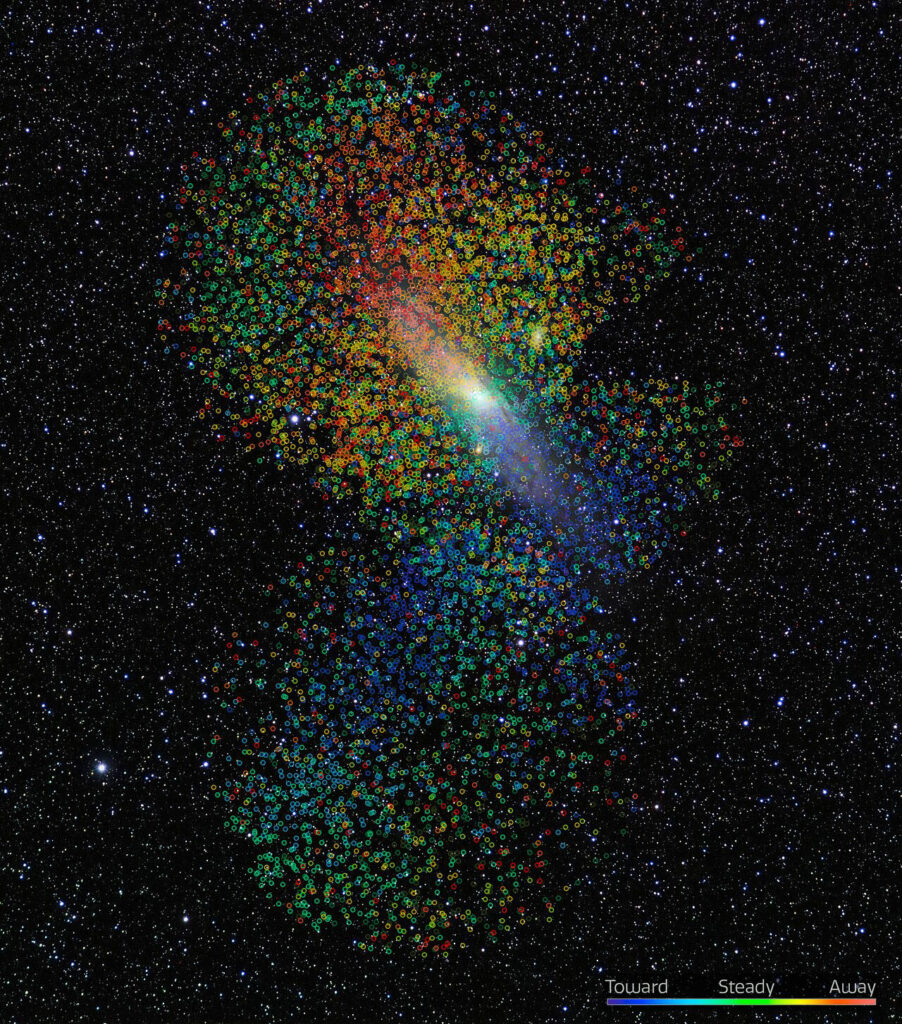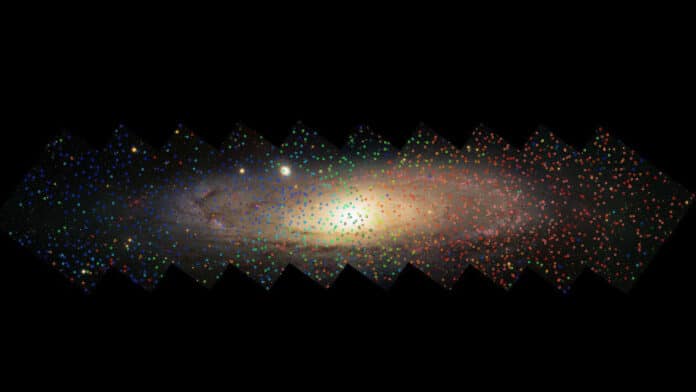Throughout billions of years, galaxies expand and evolve through the appropriately titled “galactic immigration” events, which involve the formation of new stars and mergers with other galaxies. Scientists examine the movements of individual stars within a galaxy and its wide halo of stars and dark matter to learn more about the histories of these immigration episodes. But until now, such cosmic archaeology has only been possible in our galaxy, the Milky Way.
An international team of researchers has uncovered striking new evidence of a large galactic immigration event in the Andromeda Galaxy. Star motions exhibit complex patterns indicating migratory history similar to the Milky Way. The new findings were attained using Nicholas U.’s Dark Energy Spectroscopic Instrument, which the DOE operates.
A team of astronomers studied the motions of nearly 7500 stars in the inner halo of the Andromeda Galaxy, also known as Messier 31 (M31). They found patterns in their positions and motions that indicated how these stars originated as a part of an earlier galaxy that joined M31 about 2 billion years ago. Although such patterns have long been anticipated by theory, they have never been observed in a galaxy with such clarity.
The new observations reveal evidence of a galactic immigration event in exquisite detail. During cosmic history, smaller galaxies like M31 and our Milky Way served as the building blocks for larger galaxies like M31 and our own.
Sergey Koposov, an astrophysicist at the University of Edinburgh and coauthor of the paper, said, “We have never before seen this so clearly in the motions of stars, nor had we seen some of the structures that result from this merger. Our emerging picture is that the history of the Andromeda Galaxy is similar to that of our Galaxy, the Milky Way. The inner halos of both galaxies are dominated by a single immigration event.”

The team used DESI to explore the history of migration in M31. It is the most powerful multi-object survey spectrograph in the world and can measure the spectra of more than 100,000 galaxies a night.
This investigation provides information on the past of our galaxy and our galactic neighbors. During a galactic merger 8–10 billion years ago, most of the stars in the Milky Way’s halo were created in another galaxy and eventually moved into our own. Astronomers can get insight into one of the crucial occasions in the Milky Way’s history by examining the remnants of a comparable but more recent galaxy merger seen in M31.
Arjun Dey, an astronomer at NSF’s NOIRLab and the lead author of the paper presenting this research, said, “This science could not have been done at any other facility in the world. DESI’s amazing efficiency, throughput, and field of view make it the best system in the world to survey the stars in the Andromeda Galaxy. In only a few hours of observing time, DESI was able to surpass more than a decade of spectroscopy with much larger telescopes.”
The research was carried out in collaboration with two Harvard University undergraduates, Gabriel Maxemin and Joshua Josephy-Zack, who connected with the project through the Radcliffe Institute for Advanced Study. Najita was a Radcliffe Fellow from 2021 to 2022.
Journal Reference:
- Dey, A. et al., (2023) “DESI Observations of the Andromeda Galaxy: Revealing the Immigration History of our Nearest Neighbor” to appear in The Astrophysical Journal. DOI: 10.48550/arXiv.2208.11683
